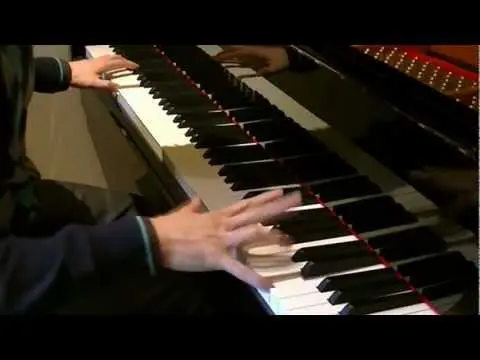Piano Lessons, Uncategorized
Chopin Etudes
Chopin Etudes
https://www.youtube.com/watch?v=Z5LkO2sjGFo
A major favourite of musicians and listeners alike has been these 27 masterpieces written by Chopin. Starting from his teenage years Chopin had taken the technical exercises (like we are so used to seeing) added a real musical harmonic depth turning it into a substantial masterpiece in the performance repertoire.
For any pianist looking at these highly recommend pieces which not only captivate audiences but are also a great way to warm up, give you a challenge while boosting your technical facility and enjoyment of the instrument. The Chopin studies are something that offers a valuable source not only to recital pieces but also to literally use to practice the technical elements too. The best part of any of these pieces is that Chopin take one particular technical theme- whether octaves, thirds, sixths, left-hand semiquavers etc. and stretches out the possibilities into one full piece of music with a lot of variation and variety.
Originally and clearly the etude (meaning study) was literally used for students to practice their overall techniques before pieces. Namely Czerny, Clementi, Moscheles, Fetis and Cramer. Chopin had added an artistic element to give the Etude just as much prevalence as any other type of works like the Sonata, Nocturne or Concerto.
The first set of Op. 10 was dedicated to Liszt, the second set op. 25 to Liszt’s mistress Marie d’Agoult. Meanwhile, the set of three Nouvelle etudes were compiled by Moscheles and Fetis as part of their Method des Methodes de Piano. They were initially published throughout France, Germany and England as early as 1829 up until 1841.
For any intermediate to the advanced student first becoming introduced to Chopin’s style and Etudes in general, I would recommend Chopin’s Preludes op. 28 (see video above, played by Juan Rezzuto) as they act a lot like mini-Etudes and have similar effects in technical facility and interpretation. Of course, most are very short: which is a good way to start building long term stamina. The Nouvelle Etudes are the next best first step as the difficulty level starts to progress at a more comfortable pace.
Many of the etudes offer great musical imagination- with their later gained nicknames such as ‘Waterfall’ (op.10-1, see video demo above) ‘Torrent’ (Op 10-4) ‘Winter Wind’ (Op.25-11) and ‘Ocean’ (Op. 25-12). Some particularly comical ones like ‘Horseman’ (Op. 25-3) and ‘Wrong Note’ (Op. 25-5).
The most well-known ones are E major ‘Tristesse’ (Op 10-3) and C minor ‘Revolutionary’ (Op 10-12) both have a great sense of musical variety. With the only two slow Etudes being ‘Tristesse’ and ‘Cello’ (Op. 25-7)
Author: Anthony Elward
https://www.youtube.com/watch?v=ftaqPCMHB6w

